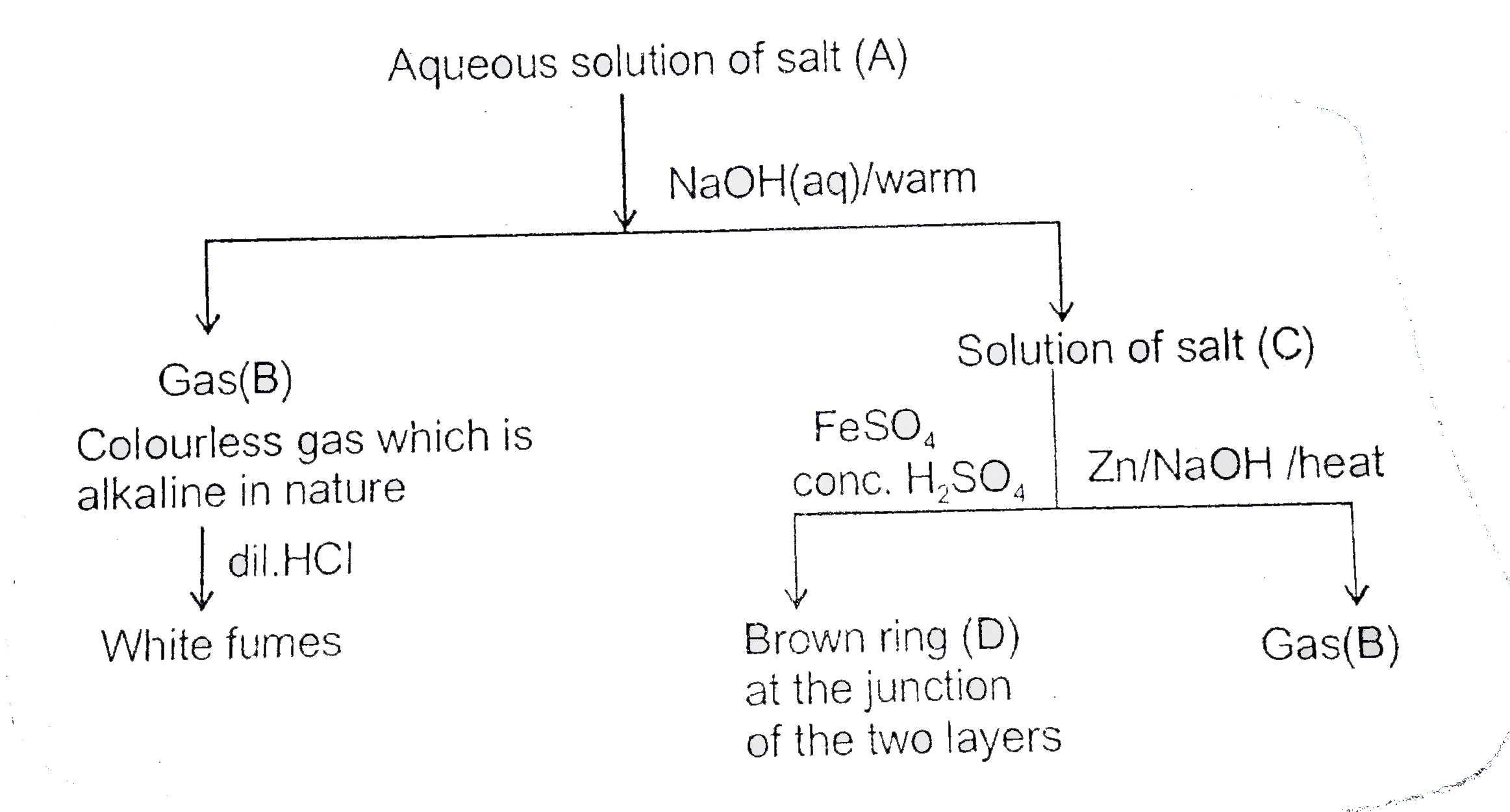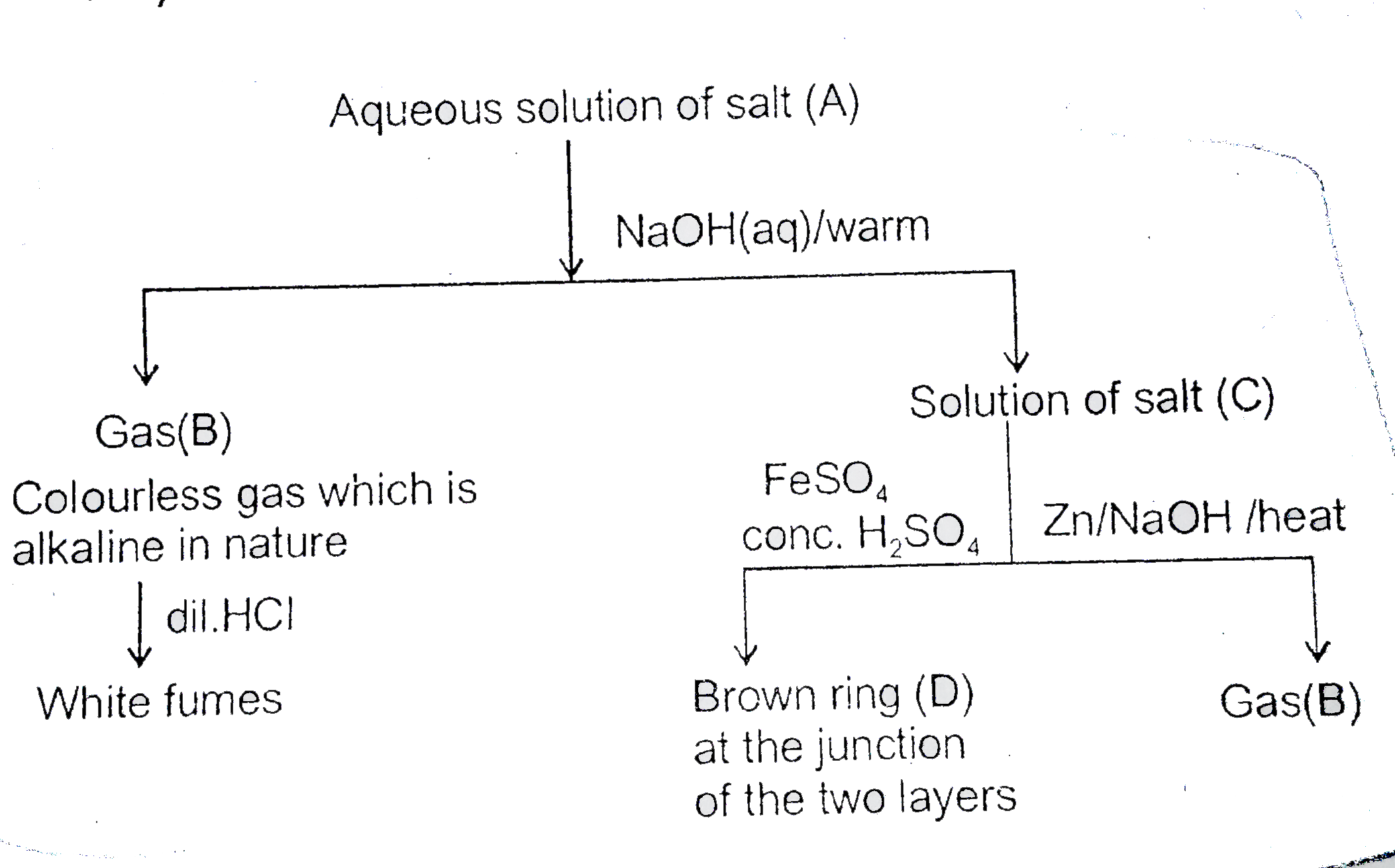Complete Solutions to PROBLEM of chapter QUALITATIVE ANALYSIS PART 1 of Class 12 book with complete answers and questions
| Class 12 | CHEMISTRY |
| Chapter | QUALITATIVE ANALYSIS PART 1 |
| RESONANCE | PROBLEM |
| Number Of Questions | 20 |
| Academic Year | 2023-24 |
`BaCl_(2)` solution gives a white precipitate with a solution of a salt, which dissolves in dilute hydrochloric acid with the evolution of colourless, pungent smelling gas.The gas as well as the salt both are used as bleaching agent in the textile industries.The salt contains:
01:23View SolutionWhich of the following precipitate(s) does /do not dissolve in excess of ammonia solution ?
01:30View SolutionChocolate brown precipitate is formed with:
01:25View SolutionPink colour of acidified `KMnO_(4)` is decolourised but there is no evolution of any gas.This may happen with the compound containing the following acid radical.
01:51View SolutionWhich of the following gives a precipitate with `Pb(NO_(3))_(2)`?
01:05View SolutionColour of cobalt chloride solution is:
00:38View SolutionA red colouration or precipitate is not obtained when:
01:19View SolutionWhen `H_(2)S` gas is passed through an ammonical salt solution `X`, a slightly white precipitate is formed.The `X` can be:
00:56View SolutionConsider the following statement:
`S_(1)`:`Cu^(2+)` ions are reduced to `Cu^(+)` by potassium iodide and potassium cyanide both, when taken in excess
`S_(2)`:`H_(2)S` will precipitate the sulphide of all the metals from the solutions of chlorides of `Cu,Zn` and `Cd` if the solution is aqueous.
`S_(3)`:The presence of magnesium is confirmed in qualitative analysis by the formation of a white crystal
`S_(4)` :Calomel on reaction with potassium iodide gives red precipitate.
and arrange in the order of true/false.02:08View SolutionStatement-1 :Addition of `NH_(4)OH` to an aqueous solution of `BaCl_(2)` in presence of `NH_(4)Cl`(excess) precipitates `Ba(OH)_(2)`.
Statement-2:`Ba(OH)_(2)` is water soluble.01:02View SolutionStatement-1 : Sodium meta aluminate on boiling with ammonium chloride produces white gelatinous precipitate.
Statement-2 :Aluminium hydroxide is formed which is not soluble in water01:48View SolutionWhich of the following statement(s) is (are) incorrect ?
01:20View SolutionWhich of the following pair (s) of ions would be expected to form precipitate when dilute solutions are mixed?
01:39View Solution
Salt`(A)` on heating gives a colourless neutral gas which supports combustion.
From the aforesaid, flow diagram, answer the following questions.
The compound `(A)` contains the following acid radical.02:25View Solution
Salt`(A)` on heating gives a colourless neutral gas which supports combustion.
From the aforesaid, flow diagram, answer the following questions.
The basic radical of salt `(A)` and gas `B` both gives brown precipitate with Nessler's reagent.The composition of the brown precipitate is:01:59View Solution
Salt`(A)` on heating gives a colourless neutral gas which supports combustion.
From the aforesaid, flow diagram, answer the following questions.
Which of the following statement is correct ?04:19View SolutionMagnesium is precipitated from its salt solution as only magnesium ammonium phosphate by adding disodium hydrogen phosphate solution in absence of ammonium chloride and aqueous ammonia.
01:15View SolutionWhen a solution of nitrite acidified with dilute hydrochloric acid is treated with solid urea, the nitrile is decomposed, and nitrogen and carbon dioxide are evolved.
01:14View SolutionSolution of alkali metal cyanide containing freshly prepared ion `(II)` sulphate solution and dilute `H_(2)SO_(4)` on exposure to air produces prussian blue precipitate
01:35View SolutionWhat happens when ?
(A) Aqueous solution of `CrCl_(3)` is added to ammonia solution.
(B) Ammonium carbonates reacts with `MgCl_(2)` (i) in absence of ammonium salts and (ii) in presence of ammonium salts:02:44View Solution
PROBLEM questions and complete solutions for chapter QUALITATIVE ANALYSIS PART 1 of PHYSICAL, INORGANIC, AND ORGANIC CHEMISTRY of Class 12
